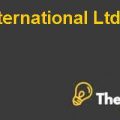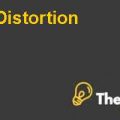Abstract
The report illustrates the case of ABCEL organization, operating in the Indianmarket.With the changesthat occurred in theIndian market, thegovernmenthas reduced the tax rates, offeringhugebenefitto the energy sector toincrease its production in the long term. Though such a changehas opened upa gateway for ABCEL to expand inthemarket, however, it needsto develop a rigorouschange plan in order tomove the organizationinto the growth stage.Such may requirean increment in numberof employees, development of a system and information management.
However, Kumar –CEO ofthecompany is confused in understanding theright parameters of the changeandculture in the organization,making him ambiguous in shifting the organization effectively into the new phases.In order to deal with such an issue, three different models have been implemented to help ABCEL in attaining its growth objective effectively.
These modelsinclude SWOT, PEST and Burke Litwin Model.
Abc- Energy Limited Culture And Formalization Harvard Case Solution & Analysis
Introduction
ABCEL Energy initiated its business in 2007 with 12 employees onboard. Thecompanyincepted the idea of offering energy to the Indian market.Since its inception, the company grew in size andquickly emerged from its infancy stage to the growth stage.Shivam Kumar-Chief Executive Officer ofthecompany has been actively involved in bringing the best out of the organization to supportthe energy issues in India.
In fact, ABCEL is a consortium ofthree groups, ABCEL itself, along with XYG and MNP. XYG served as a stakeholder of the company while MNP served as the equity partner. Hence,with these stakeholdersonboard, the companydevelopeda strongstance in the Indianmarket, offering energy services to the local Indians.
In the recent period, the Indian government hasannounced plans that could increase the opportunityfor the energy sector and will reduce the cost by 10-15%.Such amendmentis huge, however, though such changesposit strong opportunity fortheenergy sector, Kumar has todecide on the following factors before moving into the growth stage.
Since the company has been small, moving into the growthstage will require it to develop more formal protocols to maintain or change the cultureso as to cope up with the changing market dynamics.In doing so, it will initially requireKumar tounderstand the underlyingorganizationalcultureso as to develop the change stagey.
Perhaps, such is not easy due to its inability to understandthe culture exactly andtheareas that need to be transformed.Also, since the number of employees may increase in thefuture, a better plan is needed to be developed, keeping in mind theresistance factor that may arise due to such organizational changes.
Analysis
Strengths:
- The company has a strong interactive culture, allowing the people to communicate openly with one another, promoting healthy communication.
- The organizational culture is lean, allowing the employeesto work as a team and empathize with each other. Such is a strength for the company, as it promotes collective performance of the teams.
- The company has high retention ratio, along with the fact that these employs welcome newcomers, offering an adjusting behaviorand signs to the new hires.
- The company has quickly emerged from infancy to the growth stage due toactivefinancialplanning and forecast.
The company has strong financialsupport thatallows it to expand aggressively in the market...............
This is just a sample partical work. Please place the order on the website to get your own originally done case solution.








